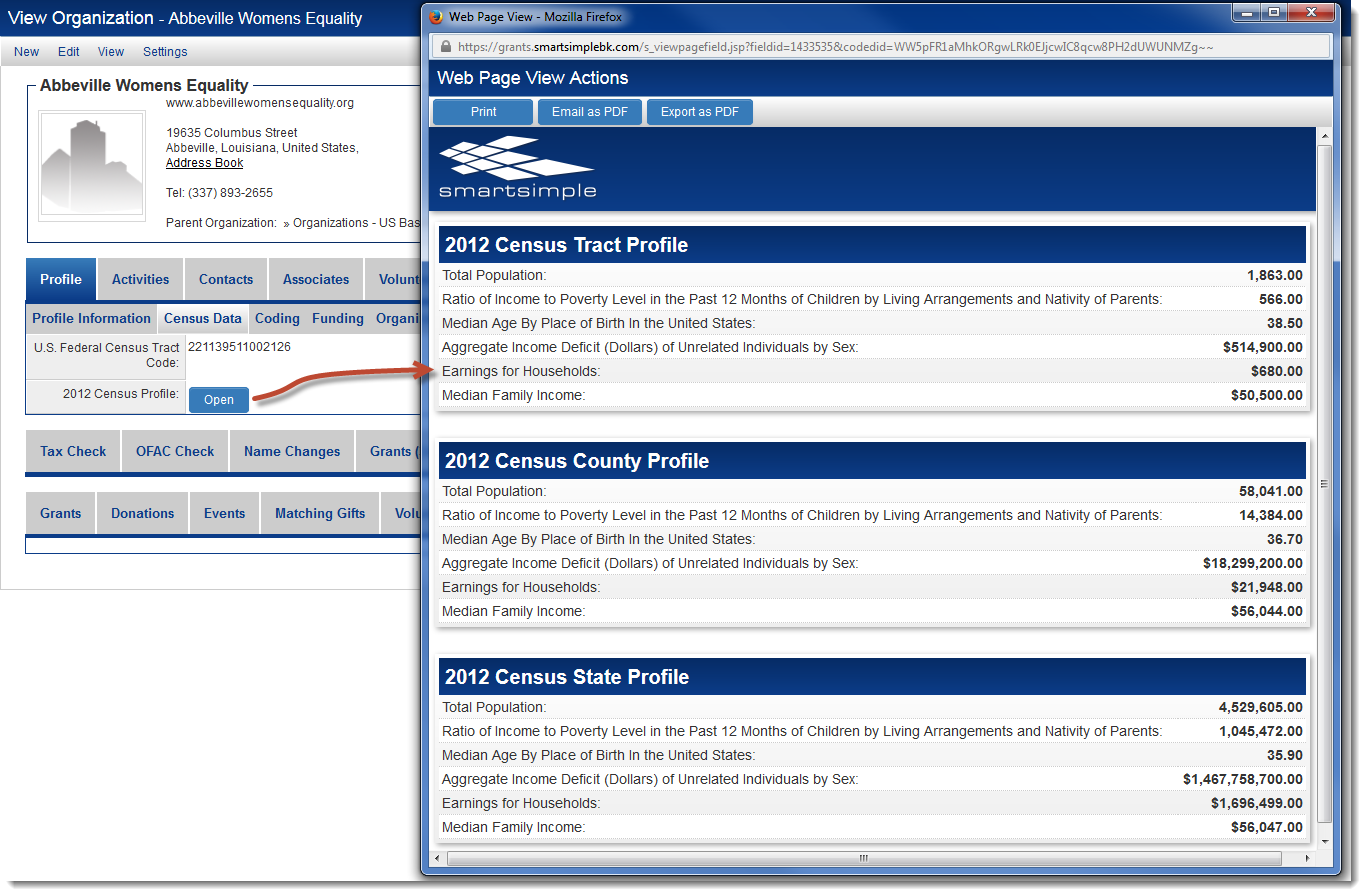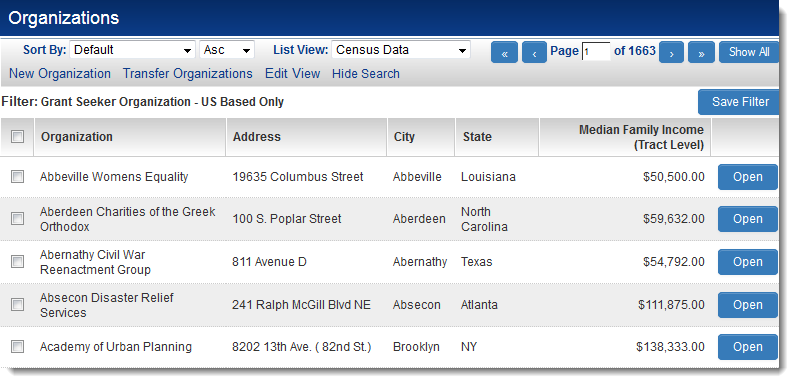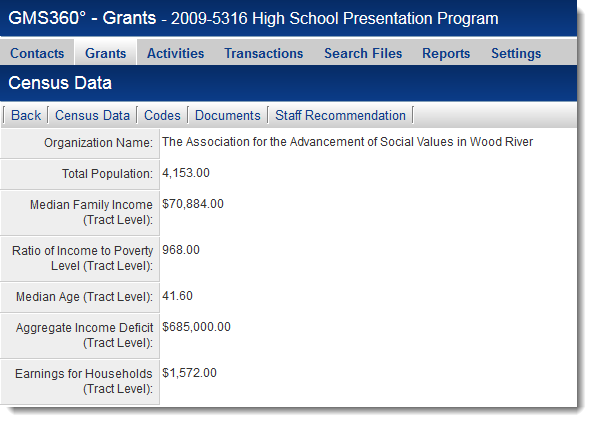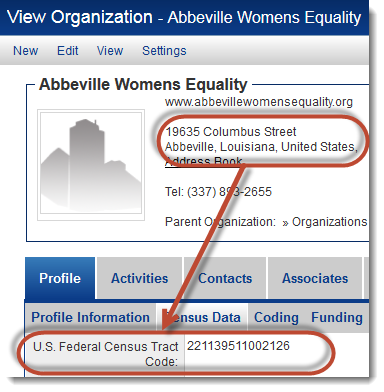Census Integration
Contents
Overview
SmartSimple integrates with the U.S. Census online database to provide our clients with the ability to access the most up-to-date geographically-relevant data pertaining to their clients.
Census data is provided at three different levels: Tract, County and State. Census Tracts are the lowest level of geographic region for which census data is aggregated.
In the example below, a Web Page View has been configured to display all three levels of census data on an organization profile.
Census Data can be referenced anywhere in SmartSimple:
...on a list view:
...on a record:
...or anywhere else. Data from the U.S. census can also be used to drive branching logic on SmartSimple workflows, or perform other calculations.
Returning the Tract Code
SmartSimple's Census Integration works by deriving the census block number from your organization or contact's address details. The census block number is a 15-digit code that incorporates - reading from left to right - the location's two-digit State code, three-digit County code, and six-digit census tract code.
In the above example:
- 22 is the State code for Louisiana,
- 113 is the County code for Vermilion Parish and
- 951100 is the census tract code for the address of Abbeville Womens Equality.
FIPS Code Syntax
In the above example, the census block number for Abbeville Womens Equality's location is returned using the following variable:
- @FFD(FIPS;;@address@ @city@ @state@)@
FFD stands for "Federal Financial Data" and FIPS stands for Federal Information Processing Standards.
On a record, the census block number can be returned for an associated Organization by using:
- @FFD(FIPS;;@client.address@ @client.city@ @client.state@)@
Returning Census Data
Detailed census data can be retrieved at three levels, the tract, county, and state.
Census Data Variable Syntax
- @FFD(Profile;;year;;Address or FIPS code;;level;;[[template]])@
Where:
- Profile is a constant.
- year is the census year from which {need to enter allowable year values}
- Address or FIPS code accepts
- a variable reference to the address, such as @address@ @city@ @state@
- the 15-digit census block number
- level accepts three values, one of
- tract
- county or
- state
- template the type of census data to be returned. Over 45,000 different database fields can be reported on from the online census database. Examples are listed below. Note that the template should be enclosed within a double set of square brackets (e.g., [[B01003_001E]])
Example: In the example at the top of the page, the Median Family Income for Louisiana in 2012 ($56,047.00) is returned using
- @FFD(profile;;2012;;@address@ @city@ @state@;;state;;B19113_001E)@
List of Commonly-used Templates
The census data templates used in the illustration at the top of the page are as follows:
| Template Name | Description |
| B01003_001E | Total Population |
| B05010_001E | Ratio of Income to Poverty Level in the Past 12 Months of Children by Living Arrangements and Nativity of Parents |
| B06002_001E | Median Age By Place of Birth In the United States |
| B17008_001E | Aggregate Income Deficit (Dollars) of Unrelated Individuals by Sex |
| B19051_001E | Earnings for Households |
| B19113_001E | Median Family Income |
A full list of the census data templates can be found here: {link to census templates}



